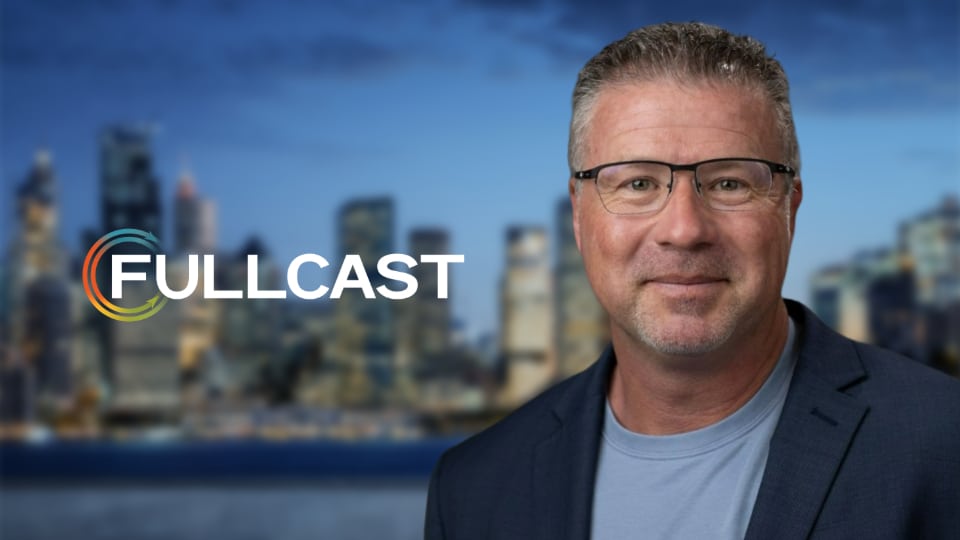What Happens After Territory Planning?
Overview
- What’s the process during territory planning? Planning for new hires? What happens after going live? [1:28]
- How do you balance which reps get higher tiered accounts when you have new hires? [4:40]
- How do you teach new reps? [5:53]
- Is there anything else that goes into planning for new hires? [8:04]
- What does the coverage model look like for territories that don’t have anybody working them? [9:42]
- How do you refresh accounts throughout the year? [16:33]
- How do you support managers when the new fiscal year starts? [21:50]
- How do you determine the health of a territory? [23:47]
- What are some things to think about when working with managers to make mid-year adjustments? [24:43]
- Final Thoughts [26:51]
Introductions
Tyler
Hello and welcome to the Fullcast Fireside Chat. I’m your host, Tyler Simons. I am the head of customer success here at Fullcast and we are a go-to-market planning and execution platform. Today we have a special guest, April, and we are going to be talking a little bit about “what happens after territory planning.” We go into this, crazy cycle that’s three or four months long, trying to clean data, trying to build territories, how we’re going to make this all work. We push the button, cut over is done. Do we just get to walk away? Probably not. I don’t know. We’re going to find out more about that. April, go ahead and give us a quick intro of yourself and then we’ll dive into some topics.
April
I wish I could just walk away, but we don’t get off that easy. So my name is April Melendez. I’m currently a manager of sales strategy and operations here at Udemy, which has been great. During my time here and actually at a previous company, I’ve gotten the pleasure to work with Tyler quite a bit. So really excited to talk to you guys about what happens after territory planning.
What’s the process during territory planning? Planning for new hires? What happens after going live? [1:28]
Tyler
Great. So the biggest thing that ends up happening is we end up planning for some new hires. We’re going to hire throughout the year. Let’s say you’ve got ten reps now. You’re going to hire to 15. What’s the process during territory planning? What’s the process in terms of planning for new hires? Then once you go live with your plan, what happens after that?
April
Definitely. So, you know, you’re in a good spot if you’re planning for new hires. That’s always a positive. So it’s a good thing to have to plan for that. Kind of the first step in planning for new hires is you need to understand how many new hires are you actually going to have. So that’s almost the first part of the process. That’s a different fun process, capacity planning, all head count planning. That’s a different process. Also a very fun process that we can talk about at another time.
So once you understand the total amount of people that you’re hiring and the total amount of books you have to carve or create, another process that needs to be done even before you create books is also data. You need to make sure that your data is clean, making sure you’re actually working with the correct data. This way, you don’t accidentally make a mistake where, for example, you give a very small company to an enterprise level rep. We really don’t want that enterprise level rep wasting their time on a small company when they should be working the big deals. So we really want to make sure the data is clean. That’s another very fun process that we can talk about another time and different ways to go through that.
So let’s say your data is clean, you have the number of head counts that you’re trying to grow by. What do you do? So, last year in our process, what I did is I actually met with all of my direct managers and wanted to really understand their business based on some anecdotal stuff that they knew and more contextual stuff they knew based on what their idea of what a good book is. Maybe some factors that aren’t necessarily in Salesforce are easily reportable for me and then marrying that with data that I had that indicated what are really good accounts or high value accounts.
So after doing those kind of talks with the team and really understanding “how do we make these books,” the next step is really understanding and making sure we’re on the same page of “what is the purpose of this? What is the purpose of creating these books? Is the purpose to make things equitable and equal?” That’s usually what I try and push our teams to go towards, because I think at the end of the day, from a SalesOps perspective, my goal is what’s best for the business and what’s best for the business is to create equal territories for everybody, including new hires. We really need new hires to come on board and have a chance of hitting their number, and that’s really my goal.
How do you balance which reps get higher tiered accounts when you have new hires? [4:40]
Tyler
I’m fearful we’re going to go down this rabbit hole, which is probably fine, but this has been the hardest thing. You’ve got reps, in seat, right now, that could work high value accounts. So there’s this tendency to want to give the best accounts to reps that already exist within the company, that are ramped, etc., but you do have these new hires that you know you’re going to hire for, and you don’t want to just give them the tier D accounts or however you tier your accounts when they hire. So how do you manage that process and think about that?
April
I think it’s kind of like the law of diminishing returns. I think there’s only so much that a fully ramped, really good rep can do at a certain point. So let’s say your best selling rep has 100 customers. I know for a fact, even without looking at the data, that that person can’t effectively work 100 accounts to their best ability. That whereas actually splitting that up to maybe 20 per person across five reps, we could get out a lot more ARR because the focus is there and we’re able to give that rep focus and allowing them to really dig into these accounts versus doing more surface level blasting accounts just because they have a ton in their name.
So I think, again, you have to tie it back to what’s best for the business in terms of we know reps can’t physically work that many accounts. So showing that and working with the managers to see that as well, and getting manager, director, and VP buy-in around that as well. And I think they usually understand from a rep perspective, having been a rep, there’s only so many hours in the day that they can get there.
How do you teach new reps? [5:53]
Tyler
There’s kind of this education process that happens. How do you go about doing that? Is it like backed by data? Do you just say that this is the way it is or what’s your approach?
April
Actually, my first couple of months at Udemy, when I did the very first carve here, what I first did is I wanted to get a lay of the land and I did an analysis to kind of see “what is the optimal number of accounts a rep can work.” One of the ways I looked at that is I looked at everybody’s books and looked at their last activity. Just as a basic metric, looking at how many accounts within their books did they actually touch within this quarter? Because if they didn’t touch it within a whole quarter, that they could have been selling to, we know that there’s potential that another rep could have been working some of those accounts in their book. So I think that’s kind of what I led with.
I showed this data to the VP and they were all on board in terms of, “Wow, there’s all these accounts. There’s all these customer accounts,” which are usually very highly sought after, that were not being touched in a whole quarter. That could lead to other downturns effects, churning, not upselling into your customers and building those multi-year deals and really entrenching them into the business. So it has a lot of implications when we’re not effectively working all of the accounts.
I think that was one of the biggest eye opening moments I had with my managers here, to show them, “Look, this is actually what’s going on. They’re not working all their books.” because I think in their minds sometimes they thought maybe they were somehow.
Tyler
It’s a simple approach, but extremely effective. I think if there’s one takeaway here, it would be that.
April
So from that we actually cut the number of accounts, the total number of accounts each rep had pretty much in half. So when I went and did the carve, it was completely different. Again, another thing that I tried to drive home with the managers is “Don’t you want your reps to focus and have a smaller number of accounts that they focus on and really dig in with high quality touches versus email blasting 1000 accounts,” for example.
Is there anything else that goes into planning for new hires? [8:04]
Tyler
So we’ve got education done. The managers are on board. Let’s say the reps are on board. You know that you’re going to go build balanced books. Is there anything else that goes into planning for new hires?
April
Well, there’s one more thing. There’s usually some stipulations that me and the managers kind of talk through. So for one example that we did for this year, is we did split up customers to again try and create these equitable books and equitable books for new hires. But one of the stipulations, for example, was we wanted all of the customers that the rep had actually closed within the past year, to stay with them. I think that’s important because I know with carving, creating books, and taking accounts away, that can be really sensitive for the sales reps.
Especially if I understand if they put forth all the effort to actually close this account and this customer, we don’t want to take them away and just give it to somebody new, for example. So I do understand where what’s best for the business could also be keeping some accounts with certain people and having that sense of pride and relationship that that rep has made since they’ve gone through the whole procurement process, getting their champion, and getting it over the line at the last minute. I think that’s also important to really keep with the reps. So that was another kind of stipulation I added into my analysis.
What does the coverage model look like for territories that don’t have anybody working them? [9:42]
Tyler
You get the books built, you got reps that are working their territories. Now, you have your TBH territories created. What’s the coverage model look like for these territories that really don’t have anybody working them? How do you handle that?
April
There are different ways to do it. I think right now, because a lot of this territories and book building is a little bit new, especially at our current company, it’s still something we’re experimenting with on what’s the best. What my managers and directors still really want to be conscious of, which I think is good, is fairness. So, for example, if I’m a rep and then I get to cover one of these TBH books, is that fair compared to a rep who doesn’t. Who doesn’t necessarily get double the amount of accounts that somebody who gets to cover somebody else’s.
So I think there’s again, this give and take between what’s best for the business and what’s fair overall. Some of the ways I’ve seen it done, I think it’s a little bit easier when you’re in a territory model. Some of the ways I’ve seen it done is, let’s say two reps share San Francisco and one rep goes on leave for a while. The other San Francisco rep would just take it over. That’s just luck of the draw. Their partner in that territory decided to go on leave, and then they would do a split on any revenue that was closed when that person was out.
In territories, I almost think it’s a little bit easier, it makes a little bit more sense. Or up to the mayor’s discretion, “This person’s book is in Florida, you’re in Georgia. It makes sense. You already have that business understanding based on the territories over there.”
Although, we’re still trying to figure out, do we split up the book across all the reps? But that’s really messy, that’s hard to track, that’s probably not best practice. I don’t want to take that on. But then there’s also the other side of we can’t just have these customers and these high value prospects sitting there and not being worked. That’s I feel like a missed opportunity that we need to address. So we’re still trying to figure out what’s the best way.
I personally think that it should probably be you figure out which reps need it. Either currently, they’re just not getting a lot of traction in their book, maybe give them a coverage book to help boost them, or give it to some reps who are doing really well, are really hungry, and already very highly productive and maybe seeing how that works out.
But I think splitting up the books is just messy. I don’t want to take on tracking all of that. But I also think really nailing down the split opportunity piece of it. Let’s say somebody closes a new business deal within that person’s book. How does that go? Does that customer then just go to the person when they come back from leave? It’s still hard to say and I think it’s something that leadership really needs to set a hard line on and make sure it makes sense for the business.
Tyler
You definitely need to have really clear rules of engagement if you’re going to have people covering TBH territories. One thing that I’ve seen on my end is there’s this philosophy. Let’s say you did your analysis that we were talking a little bit about earlier. You really can only work 100 accounts in a quarter. So you put 100 accounts in everybody’s book, all the territories. So you have these TBH territories that have 100 accounts that are ready. For when this person starts, we’re ready to give it to them.
Now, if you think about assigning somebody temporary coverage to this territory and that’s an additional 100, do you think that they might actually work any of these? Probably not, because if they’re already maxed out with 100, they’re probably not going to, I guess, proactively reach out.
So what we’ve seen some customers do is that, as inbound things come through. So somebody raises their hand, it says they want a demo request and that they belong to an account that’s in that book, we would either Round Robin that to a rep that’s an active rep, or you’d have someone temporarily covering because you decided “You’re handling this because you’re already in San Francisco, we’re going to assign you to San Francisco. So if something inbound comes in, we’re going to go in that direction.” So that’s kind of this assumption that there’s no proactive stuff happening, but it’s mostly reactive, and we’re going to take this inbound and deal with that.
April
Well, then that kind of brings the whole question of equitability back up. Is that, if you have double the accounts than other people, you technically have double the propensity to get an inbound lead. Is that fair if you actually get to keep that inbound lead?
I like your Round Robin idea as well and then Round Robin that. But then tracking all the Round Robin inbound leads that come through just from that book, are those going to then come back to that rep when they get back in, or do those people get to keep it if they close it?
Again, it’s just things that need to be kneeled down with the ROE. Then if there’s a lot of inbound leads that then get assigned out, does that make that book no longer maybe a good book based on the KPIs and metrics?
Tyler
Certainly on our side, we’ve seen people; and I’m just going to comment on it because there’s something else I want to touch on. But on our side, we talked about making clear ROEs, and it’s just been that a lot of customers will do the Round Robin stuff, but once that person is hired, they take on those accounts no matter what. There’s holdout supplied and so if there’s open opportunities, you get a time to close it, blah, blah, blah. So things to think about.
How do you refresh accounts throughout the year? [16:33]
Tyler
I want to go back to this piece. You had mentioned something earlier which was really interesting to me, which is you get 100 accounts. I like this 100. It’s easy. Now you’ve made this change to this territory model. You’ve cut it in half. They had 200 accounts. Now they’re down to 100. Let’s say you’re a rep that’s gone through all 100 accounts. I’ve reached out to all hundred of my accounts and they’re all dead leads. This is hypothetical, but let’s say you get to the end of the quarter, they’re all dead. What about this notion of maybe refreshing accounts throughout the year or this model that might happen where you can give reps additional accounts? I think you might have played with that in the past, and it’d just be interesting to hear your thoughts on that.
April
So this kind of came up naturally with us really reducing the number of accounts in their hands and this kind of came up. What if there are some accounts that reps no longer want to work or just aren’t touching at all? Do we really want to keep that landlocked into that rep’s name? Or do we want to potentially give somebody else a chance to go after those accounts that are “bad accounts”? Or take away some of those accounts that haven’t been touched at all, that maybe somebody else could go and try and break into this account and create more ARR. So we have explored this.
First off, we’re starting off with a smaller amount. We’re starting off with like 10% of their accounts. They can go in a quarterly refresh, give up X amount of accounts, and then choose from this kind of open bucket of accounts that they want to potentially work instead of those ten. I really like that because, I think there’s a lot of opportunity in that. I think there’s accounts sitting in people’s names that in a different person’s hand could potentially create a lot more ARR out of them.
Tyler
So you’re giving the reps the control to pick those, not just like offsets you need to work.
April
I’m giving them control and I’m also giving the managers data around which accounts are not being touched. So then the managers, workers, or reps to identify which ones do we think we should switch out and I handedly say, “Hey, you’re not touching these ones. They’re out.”
Tyler
Is this the first rendition of this?
April
Yeah, I’ll let you know how it goes, if it’s pandemonium or what have you. But I believe in it and I understand the purpose of it. Luckily, in some of these segments, we have a lot of extra accounts that are even just sitting in the manager’s names, just even excess of any of the books that we’ve created. Again, I may have not chosen that as a high value based on my metrics, but there may be some contextual evidence or somebody knows somebody at a company and it’s sitting in a manager’s name, and I don’t think we should prevent them from working those accounts.
Tyler
Is this something that’s happening across the board and all the segments, or is this more on the smaller side of deals that are a little bit more higher velocity where you have more volume?
April
Yeah, it’s definitely in the smaller segments right now. In our larger segments, those are all in territories. So you can’t really do a lot of refreshing within territories because that’s kind of set in stone. But yes, within these smaller ones, things are very fast paced and things are very transactional. Being able to pivot around that with this fast paced business, a company yesterday could not have been ready and today they are. They’re going from 50 people to 100 people. They need to upscale their workforce.
So I think things change a lot quicker. And with the nature of that, it makes sense for us to transition some of the accounts a little bit quicker versus waiting a whole year, keeping somebody landlocked in those accounts, when again, I think there could be opportunities elsewhere, potentially within the space.
Tyler
It’s super important. I think everyone gets stuck on this notion that sure, I’ve split up enterprise mid market SMB, but you don’t need to have the same go to market model underneath that. You don’t need to have geo for every single one.
April
What’s the purpose of a geo site? What’s the purpose of having a territory?
Tyler
Yes, exactly. So really think through how you want to go to market. What is the dynamics of the deal? Is it high volume? Is it fast? Do people go visit customers, so on and so forth, so that you can model each of those segments out and play with certain things.
April
I think you wanna flip to reflect that business model. I think within all the segments, one thing that I try to do, just because I support three different segments, I think with all of them there are common themes. So I think a common theme within that is focus. And I think sales reps sometimes have a lot of whiplash, a lot of shiny objects. We really want to make sure within each of my segments that I support, to create that focus because I think once they set their minds to it, they’re sellers, they’re going to attack it.
How do you support managers when the new fiscal year starts? [21:50]
Tyler
Got it. What about supporting sales managers after go-live, we’re going to change the subject a little bit. But you go live, you work with the managers a lot leading up to that process in terms of building the balanced books, how many accounts need to be in each territory, etc. But things start happening. The business is dynamic. So how do you support the managers through that process after you cut over to your new fiscal year?
April
I wish I could just step away after territories are done. That would make my life way easier. But unfortunately, that’s not the case because I think, like you said, things are constantly changing. As a salesop or as a sales manager, they need to have a pulse on their business at all times.
So I think right after go-live, what I always try and do is I give them reporting in Salesforce as well as just overview metrics of their books. What they look like, how many they have, and then give them some reporting so they can actually see all of their teams. Then they can continue using our report to kind of track themselves to see how their accounts are changing and how their reps are doing.
But then I think it’s also really important to give them updates on the health of their accounts, books and territories because I think we need to be proactive instead of we get to the end of the year and, “Oh, this one team didn’t hit their number. Well, it looks like there was a lot of inequities between the books, and it looks like a lot of potential churn happened,” or whatever happens within the business, we need to be proactive on that.
What I think is also important is doing mid year or even quarterly check ins to kind of get a pulse on the health of the books and the health of the territories, because if we do need to pivot, we do that before it’s too late.
So, for example, let’s say there’s a territory on the Midwest, and there’s not a lot coming in with that territory. I think that could be a time of “How do we change the pace or what can we do to help this rep? Does that mean weight them higher in the Round Robin? Does that mean we give them an open territory for them to work and supplement to help them get on their feet?” So I think it’s really important to have a pulse on your business and to illuminate that reporting for the sales managers as well.
How do you determine the health of a territory? [23:47]
Tyler
What are some of the things that you’re looking at to determine health of a territory? This is obviously going to be different for everybody, but there’s probably some common themes here that people can take away from this.
April
I think an obvious one, maybe not the obvious is close one’s ARR. At the end of the day, a business is measured on their sales. So really understanding which reps, which territories are really closing a lot of the ARR and understanding where that pipeline is coming from.
Is it coming inbound? Is it just some reps closing a lot of self generated pipeline? How are they doing then? How can we replicate that across the business? Are some reps working really closely with their ADR potentially, or are some reps selling a new product a lot that’s really helping them hit their goals? I think those are some ways to really look at closed one business as well as pipeline overall, to see where it’s coming from and illuminate that and see if we can then replicate that in other areas of the business that potentially need some help.
What are some things to think about when working with managers to make mid-year adjustments? [24:43]
Tyler
Yeah, give them extra stuff. So as we think about our sales managers support and you’ve highlighted some things that need to change, do you continue to work with the managers in terms of like, “Okay, we’ve decided that we need to do something with this territory.” Maybe that’s adding more accounts, maybe it’s shuffling things around. What is the process look like? There is it just kind of this ad hoc conversation. Is there anything else that goes into that in terms of making adjustments mid year?
April
So I think it can happen one of two ways. For example, last year a manager did come to me and say, “Hey, I want to potentially add this one state into a current territory just because we had a rep actually moving into that state. It just made sense as a Pac Northwest. So it just made sense in that arena to add Washington into that current territory because she was moving there, she was a great rep, and it was close to her current territory. So I think things happen kind of ad hoc with managers coming to me, but I think things also happen within QBR.
We do quarterly business reviews, and that’s another time where we really have to report out on the health of the business and understand what’s working, what’s not. I think in trying to strategize with the VP or whoever on what can we do to accelerate our business, that’s always something that we’re gonna look at. We’re always looking to improve. You’re never looking to say, “Hey, things are going okay.”
I think in any growing SaaS business, you always need to be looking at, what can I do better? And I think with those conversations, especially in the QBRs, those usually come up. Is it a process that we need to make easier? Is it a new tool that we need to get? There’s a lot of things that go into it. Then part of it of course is, are the territories or books working?
Final Thoughts [26:51]
Tyler
Yeah, we are almost at the end of our time.
April
Why? I’m so sad.
Tyler
I know, right? I told you 30 minutes isn’t long enough. Was there anything else that you wanted to add to this? Any key takeaways, I guess, a final statement, if you will, and then we can finish up.
April
Yeah. So I think with territories, what’s really important is number one, making sure that things are equal across the board, we’re giving equal opportunity, we’re setting up reps in order to hit their number. We want everybody at the same opportunity to hit their number. I think, of course, then that leads to what’s best for the business. So I’m always thinking of what’s best for the business. So it’s making sure things are equal, but then also building things for scale.
Before I came in, the process we did was not fun that I inherited. It was pretty much a spreadsheet and the managers just randomly chose any open accounts. There was no analysis that looked into what makes a good book. It was very random and it was manual on my part. Then I have to take all those IDs and data load it. It wasn’t very fun for me. So really making sure we’re building any kind of territory, pre and post planning, that’s scalable for the business. That doesn’t take a lot of time for me to do or for the managers to do or understand. So I think that’s kind of the last thing is really making sure that you’re building these processes and territories this way they can scale with the business.
Tyler
Wonderful. April, thank you so much for joining us today.
April
I know this was great because I feel like I usually see you every day within the last three months of the year and then I disappear a little bit. So it’s crazy to see you not towards the end of territory planning. I’m like an abusive boyfriend who just disappears and I come back in.
Tyler
I love it.
April
This is great. We’ll have to do more of these.
Tyler
Yes, I would love to do that. We’ll do it. Maybe later on in the year we’ll hear a little bit more about how the refreshing goes because that’s something that’s super interesting to me and I think it would be good to follow up on so thanks again, April.
April
Awesome. Thanks Tyler.
Tyler
Until next time. Bye.










